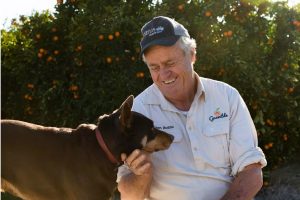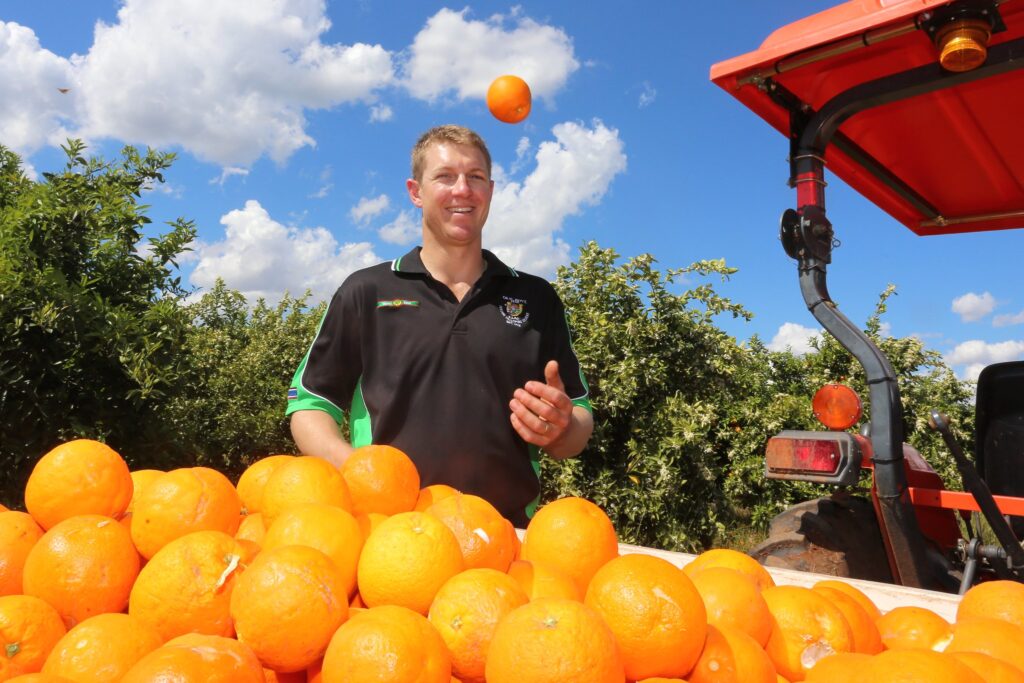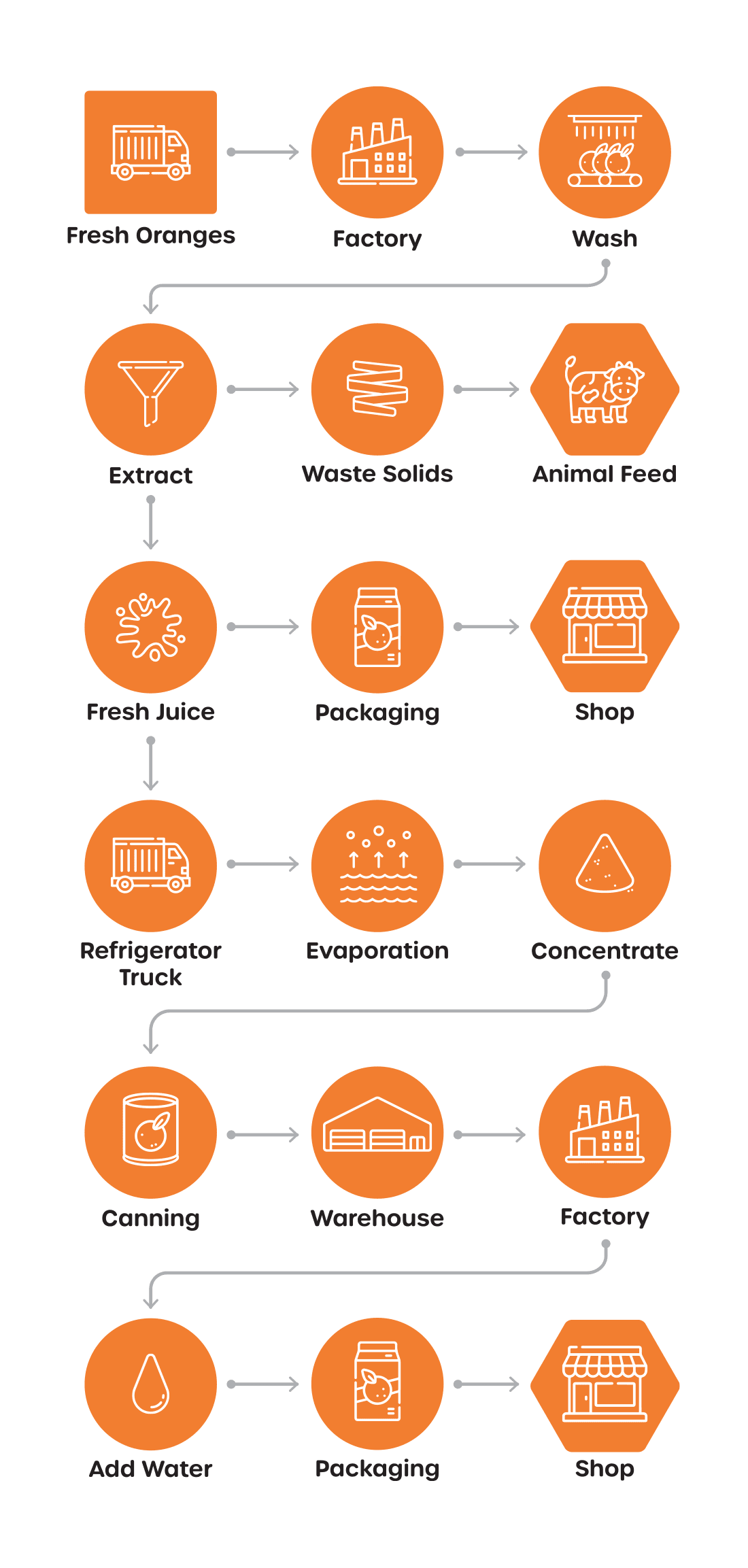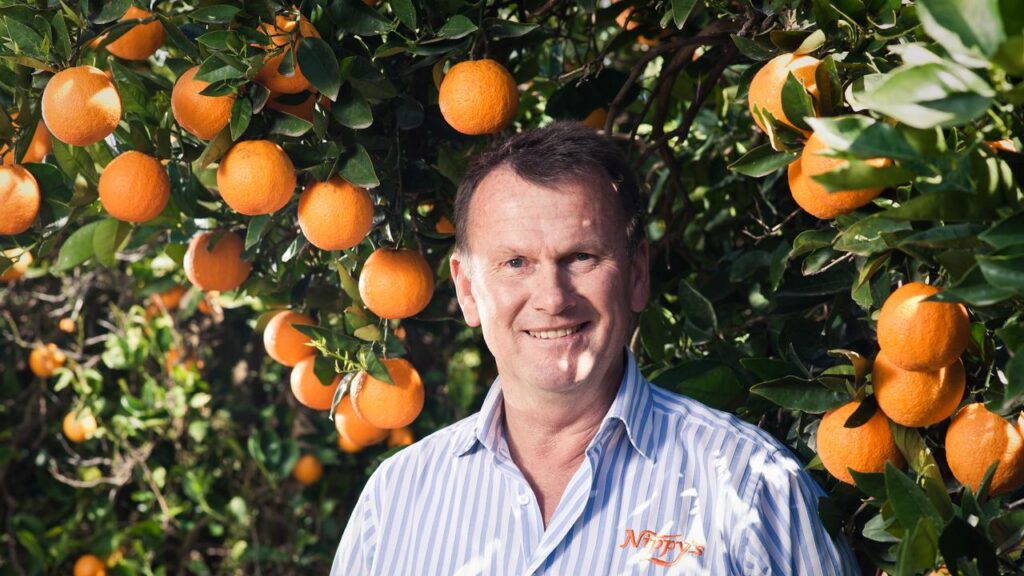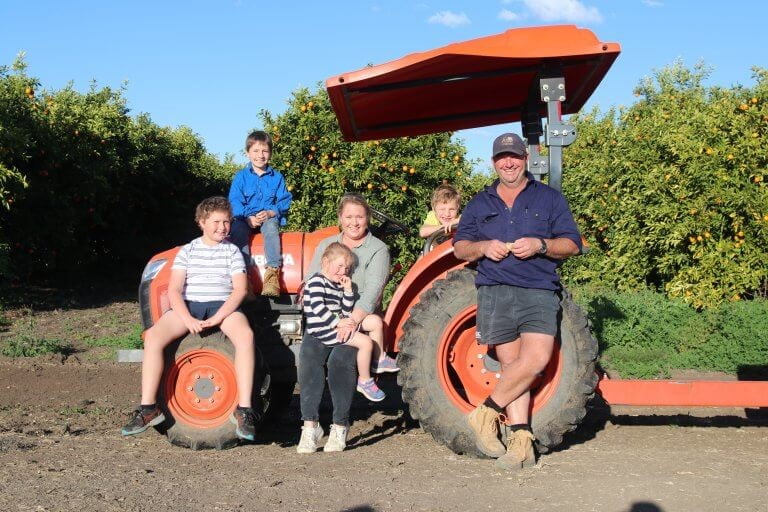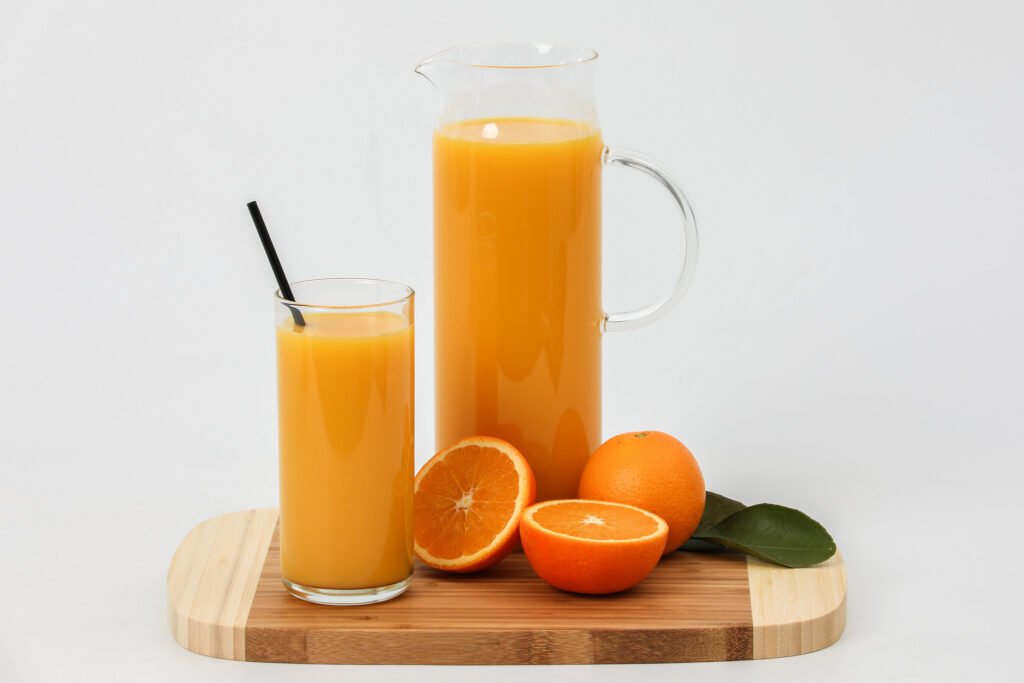
The Importance of Juice
The juice sector is hugely important to the overall citrus industry. Accounting for approximately 24% of the citrus industry, juicing oranges - Valencias, are grown predominantly for juicing but some are also sold into the fresh market.
Whilst some growers focus solely on growing Valencias, the variety is also grown by a large number of citrus growers as a summer ripening crop to complement their seasonal output throughout the year.
The juicing industry also takes in a percentage of navel oranges and mandarins that don’t meet specifications or grade requirements to be sold on the fresh market, thereby providing an outlet for fruit that still tastes great and can be included into the final juice mix.
A serving of juice with no added sugar, according to the Australian Dietary Guidelines, is 125mL.
The Australian Dietary Guidelines state that an occasional 125ml glass of fruit juice with no added sugar is equivalent to one serve of fruit. Without juice, many Australians would not consume their recommended daily intake of fruit.
100% orange juice is a natural product; it is just fruit that has been juiced, with nothing added or taken away. Water makes up about 90% of 100% orange juice with the remainder consisting of natural sugars from the fruit, vitamin C, folate, potassium and other vitamins, minerals and phytonutrients such as hesperidin.
Ready to join?
If you are not already a member, please show your support and join Citrus Australia today. Collectively we can make big things happen.
Growing Juicing Oranges
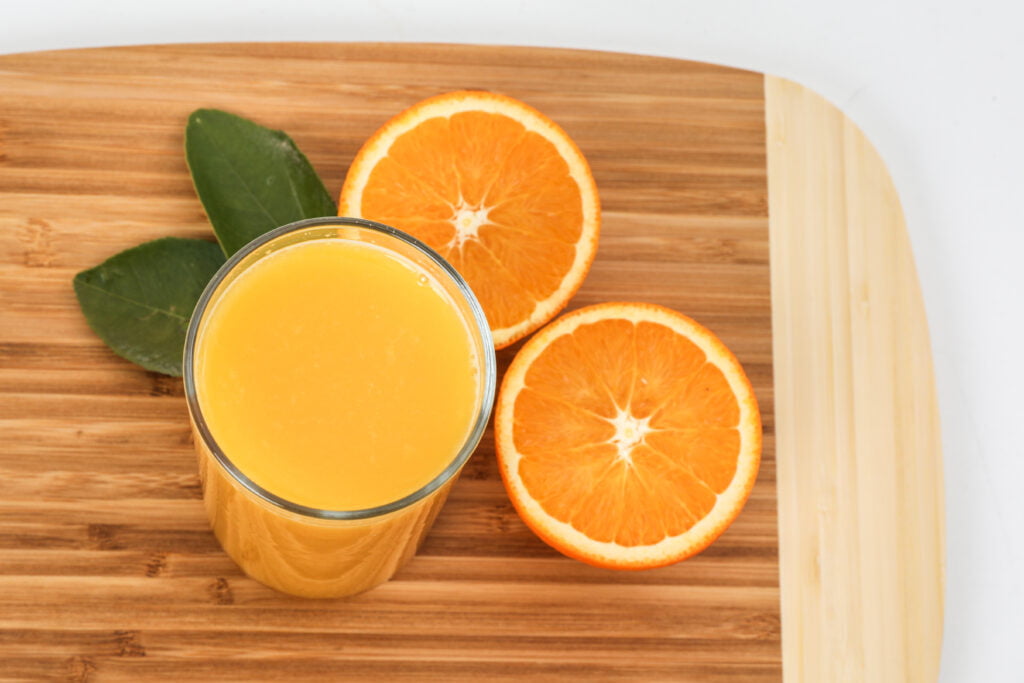
Valencia Orange Overview
Growing Juicing Oranges
Grower Profiles
Robert Hoddle
Justin Davidson
Processing Juice
Processing for Juice
What does ‘from concentrate’ mean?
What does ‘not from concentrate’ mean?
Key Steps
Processing considerations to maximize juice product quality
Raw Materials – the Oranges
Making juice from concentrate
Processing and Treatment Methods
Processing considerations to maximize juice product quality
Raw Materials – the Oranges
Making juice from concentrate
Processing and Treatment Methods
Processor Profiles
Nippy's Juice
Grove Juice
In the Store
Look Behind the Label – what it all means
The Retail Shelves
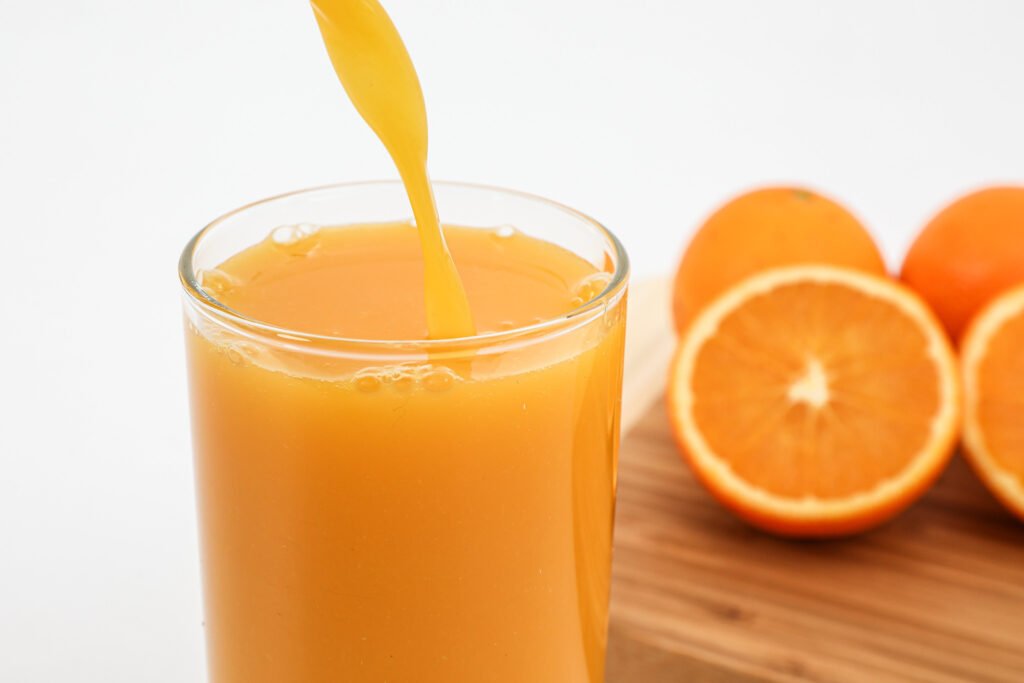
Juice Health and Nutrition
A serving of juice with no added sugar, according to the Australian Dietary Guidelines, is 125mL.
The Australian Dietary Guidelines state that an occasional 125ml glass of fruit juice with no added sugar is equivalent to one serve of fruit. Without juice, many Australians would not consume their recommended daily intake of fruit.
100% orange juice is a natural product; it is just fruit that has been juiced, with nothing added or taken away. Water makes up about 90% of 100% orange juice with the remainder consisting of natural sugars from the fruit, vitamin C, folate, potassium and other vitamins, minerals and phytonutrients such as hesperidin.
Goodness for Mind and Body
There are just so many choices out there in the drinks category; smoothies, water, kombucha, flavoured milks, soft drinks, infused spritzers, fruit and vegetable juice blends and on it goes. Orange juice has seen off many of the fad drinks that come and go. Why, because fundamentally it tastes great and is good for you, is a natural product and is grown right here in Australia by dedicated citrus growers. A chilled, orange juice with no added sugar is unbeatable.
Fruit Facts: Orange Juice
*Folate needs just before and during pregnancy are much higher
Nutrition Information
Serving size: 125ml (1/2 cup 100% orange juice)
| Av QTY Per serve | %DI* | Av QTY per 100g | |
| Moisture | 118g | 94g | |
| Energy | 146kJ | 2% | 117kJ |
| Protein | 1.0g | 2% | 0.8g |
| Total fat | 0g | 0% | 0g |
| Saturated fat | 0g | 0% | 0g |
| Total Carbohydrates | 7.1g | 2% | 5.7g |
| Sugars | 7.1g | 8% | 5.7g |
| Sodium | 3.8mg | <1% | 3.0mg |
| Thiamin | 0.1mg | 13% | 0.12mg |
| Folate eq | 66.3ug | 33% | 53ug |
| Vitamin C | 90mg | 225% | 72mg |
| Total polyphenols^ | 75mg | 60mg | |
| Hesperidin^^^ | 2.96mg | 1.97mg | |
| Beta-carotene eq | 19ug | 15ug | |
| Glycemic Index (GI) ^^ | 51 |
Source: Aust Food Comp Data or ^ USDA
GI average of 3
*based on an average adult diet of 8700 kJ
“<” means less than
Make sure to choose fresh 100% juice grown in Australia. You can find it in the chilled section of your supermarket or local store or cafe.
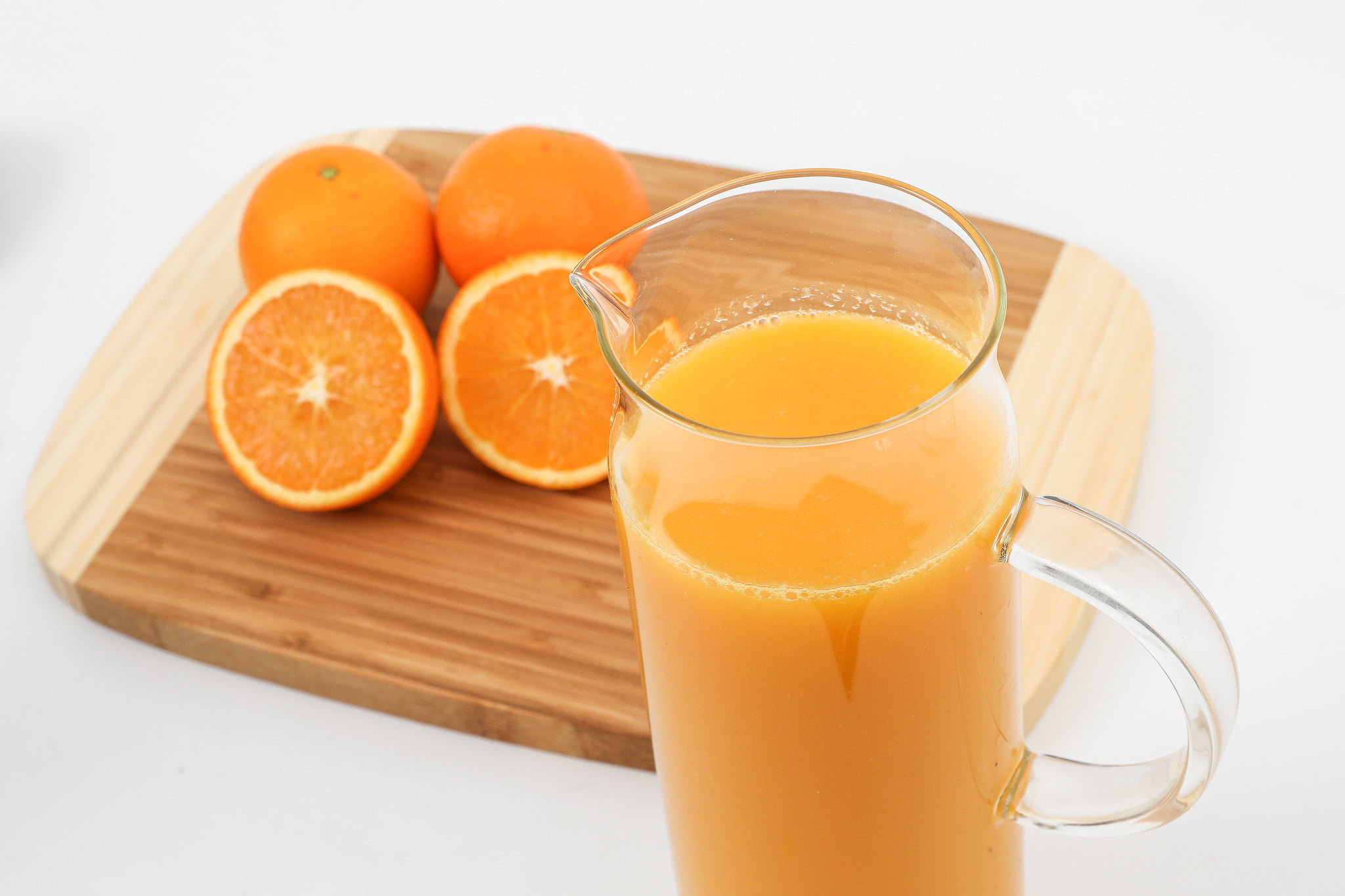
*When eaten as part of a healthy varied diet.
Sustainability in the Juicing Sector
From local growers to global juice processors, the growers producing the fruit to the companies involved in the making, packaging, and transporting of juice are dedicated environmental stewards, continuously implementing measures to minimise environmental impact while optimising production.
The Whole Crop
Chemical and Land Use
Water Management
Waste Reduction and By Products
Packaging
Energy Conservation and Renewable Energy
Market Reports
Citrus Australia has worked with Asian Agribusiness Consulting to develop juice market reports on a number of Asian nations. These resources are available free of charge to Australian industry members
You are not logged in
If you are not already a member, please show your support and join Citrus Australia today. Collectively we can make big things happen.

